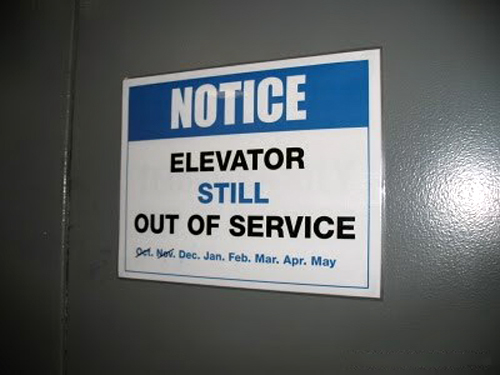
The Risk of Market Commoditization
For companies that operate in a commodity market, competing on price alone is usually a stressful and futile business strategy. When the only protection a company has against competition is lower price, an aggressive new entrant offering an even lower price for the same product or service can disrupt the business overnight, luring customers away from an established business that had nurtured customer loyalty for decades. Indeed, low-cost products and services often mean subpar quality and poor customer service, and by the time the newly-recruited customer realizes it, the damage has already been done and is difficult to reverse. As the old adage goes, it costs much more to regain a lost customer than to keep an existing one.
McKinley Elevator Corporation is a family-owned business that specializes in elevators, accessibility lifts and car lifts for homes, public facilities, and businesses. Even with reputation for top-notch customer service, the company is constantly at risk of losing market share to lower-cost competitors, and under pressure from elevator manufacturers seeking to drive down cost in a highly commoditized and price-competitive market.
Downtime is Not an Option
Equipment service providers boast fast response time and excellent first-time fix rates to demonstrate service excellence, and to charge customers accordingly. But for someone who depends on a wheelchair lift in an office building or on a residential elevator, fast response time isn’t enough. For these individuals, a broken lift is a significant—even if temporary—setback in their quality of life.
For people with disabilities, downtime is not an option.
And for public facilities and businesses, which are required to provide accessibility equipment, an out-of-service sign means not only that they are letting down citizens with limited mobility, but they may also be out of compliance with the law.
McKinley wanted to redefine service excellence. Rather than focusing on measurements such as response time merely to satisfy the service contracts, it wanted to define operational goals that directly reflect the needs and experience of the individuals whose quality of life depends on the equipment and service McKinley provides. McKinley embarked on a technology and business strategy initiative to improve the availability and safety of its equipment by detecting potential problems in advance, well before the customer is faced with the dreaded OUT OF SERVICE sign.
McKinley initiated an in-house proof-of-concept project to retrofit and instrument lift equipment with sensors that collect and transmit the status of the equipment to the company’s service operations office. The sensor data is analyzed, and if a service-related issue is detected, a field service technician is dispatched before customers is even aware of the impending problem.
The prototype developed in house was later migrated to using the ThingWorx Internet of Things (IoT) platform, connected the company’s ServiceMax field-service management software.
The Power of Knowledge
Connected equipment and real-time information form the foundation of an effective and efficient modern field service organization. Early-warning indications and remote diagnostics allow the organization to dispatch technicians promptly, ensuring they are equipped with the necessary information, tools and parts to restore the equipment to safe operating conditions quickly.
Over time, as the organization continues to monitor and analyze equipment information, the combination of real-time sensor information, data analytics and domain expertise will help McKinley turn the information it collects into deeper insight and actionable knowledge that will improve both customer-facing goals and internal performance targets such as first-time fix rate and equipment uptime.
But this experience and knowledge confer benefits that have an equally profound impact outside the boundaries of equipment maintenance and repair operations, benefits that are not obvious from traditional transaction-oriented field service metrics.
For instance, ongoing analysis of information about a wide range of installation types (of the kind that McKinley installs and maintains) and usage patterns offers valuable insight that can be used to improve product design, installation practices, and service technicians training. In return, investing in improving these elements will have further impact on uptime and field service efficiency, and allow more efficient allocation of scarce service technicians.
Another significant operational improvement opportunity is in spare part inventory, which is notoriously difficult to manage cost-effectively. Combining historical data of part failure rates with analytic algorithms, organizations can optimize part stocks in the warehouse and technicians’ service vehicles, reducing inventory costs and improving repair time.
Forward-thinking distributors and value-added resellers such as McKinley see additional opportunities to leverage the insight garnered form connected service. McKinley is happy to share its experience and knowledge with the equipment manufacturer, creating a value-based competitive advantage in a market that is highly cost-driven and can change overnight.
From a Commodity Business to End User Value
Monitoring the status of connected equipment remotely allows dispatching service personnel to rectify problems quickly, ideally before the user is faced with a broken system.
But connected service does more than improving the responsiveness and the efficiency of service operations; it is changing the conversation altogether. Rather than focusing on price differentiation and traditional service-level metrics such as response time, a connected service strategy transforms customer service from a price-centric transactional model to an outcome-based service model that delivers relevant well-defined customer value.
At McKinley, this value is in helping people with disabilities maintain their dignity and quality of life. For public sector organizations and businesses, the business outcome is better service and corporate citizenship, public image, and compliance.
Now, that’s the kind of elevator music we don’t mind hearing!
This articles was originally published by the National Association of Manufacturers.
